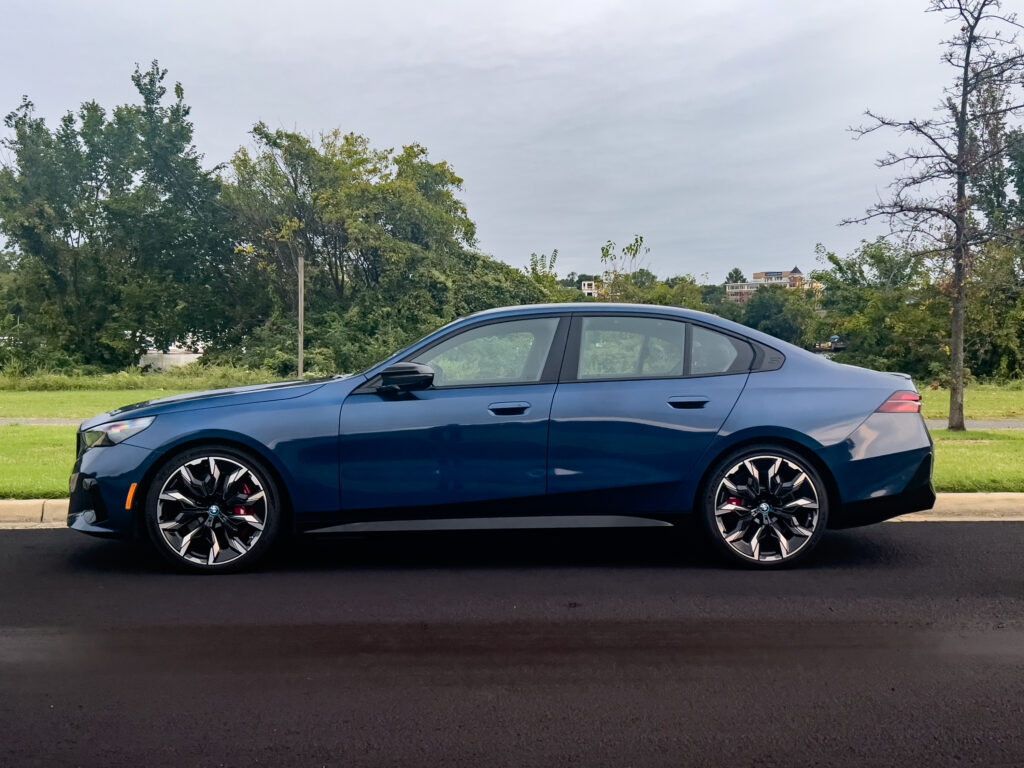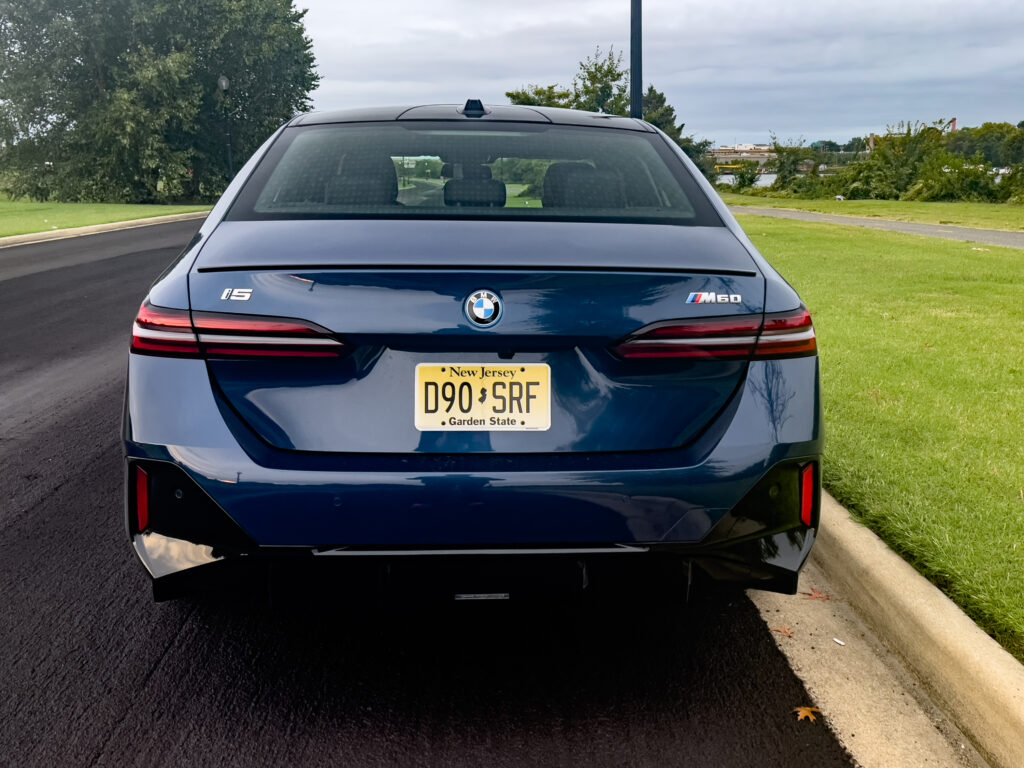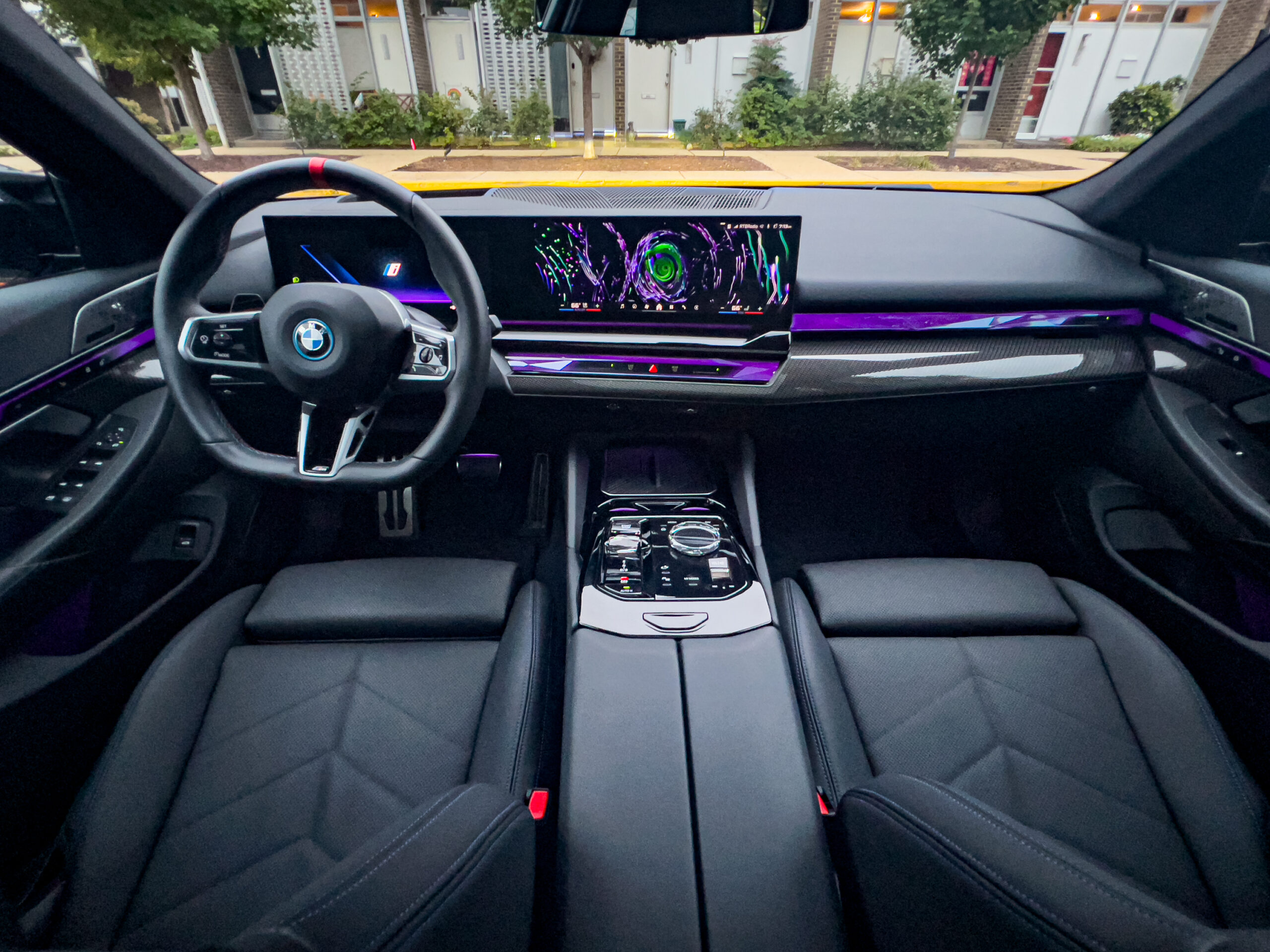Not quite an electric M5, it’s a good driver’s car.

Credit: Jonathan Gitlin
Car people, like most flavors of enthusiasts, are often given over to ideological purity tests. Car X is better than car Y because it’s naturally aspirated, not turbocharged. Hybrid Q is a pure series hybrid and is thus better than hybrid R, which sometimes operates as a parallel hybrid when that’s more efficient. That kind of thing. And we definitely see that attitude when it comes to electric cars, with some people saying that a dedicated BEV will always be better than an electric version of a powertrain-agnostic platform. It’s just that these kinds of purity tests rarely stand up when the actual rubber meets the road. That’s true with today’s car, the 2025 BMW i5 M60 xDrive.
When it was time for BMW to develop its fifth-generation EVs, it made more sense, as a smaller automaker, to create a vehicle architecture that could be equipped with internal combustion engines, plug-in hybrid powertrains, or a fully electric setup of battery plus electric motors. Purists will tell you this results in a lesser vehicle, but if that’s true, why is the new i5 so much better than similar electric sedans from rivals like Mercedes, which use dedicated EV-only platforms?
Ars Video
What Happens to the Developers When AI Can Code? | Ars Frontiers

In low-light conditions, the i5 M60’s grille gets illuminated.Jonathan Gitlin


The i5 actually has a lower drag coefficient than the smaller i4.Jonathan Gitlin
The rear is rather reminiscent of the current Honda Accord.Jonathan Gitlin
Today’s tester is the range-topping i5 M60 version, which boasts a hefty 593 hp (442 kW) and 586 lb-ft (795 Nm) from a pair of electrically excited synchronous motors fed by its 84.3 kWh (useable) lithium-ion battery pack. There’s now a PHEV M5 that exceeds this battery EV in both performance and MSRP, but with a 0–60 time of 3.7 seconds and a starting price of $84,100–$95,395 as configured, the i5 M60 is still pretty superlative.
In fact, I think the cheaper, less powerful i5 eDrive40 (or the all-wheel drive xDrive40) is the better i5, but BMW didn’t have one of those available in the press fleet, so a review of that version will have to wait for one to show up. As I often write, the most powerful version of any given EV is usually a worse deal, as they’re invariably fitted with big, range-sapping wheels, and it’s not like a 0–60 time of 5.7 seconds is particularly slow, even by 2024’s standards.
And those big wheels cause a range hit—the EPA rates the i5 M60 at 240 miles (386 km) on a full charge, although in Efficient mode that should be beatable—according to our test car, over 1,000 miles (1,609 km), it averaged 3.2 miles/kWh (19.4 kWh/100 km). Then again, if you stick it in Sport mode and hoof the throttle too often, it’s not hard to see that number plummet to 2.4 miles/kWh (25.9 kWh/100 km).

As the latest version of BMW’s fifth-gen EV powertrain, the i5 has its most up-to-date fast charging software, which uses a new control strategy to maintain higher levels of power for longer while plugged into a DC fast charger, even when starting at a state of charge as high as 50 percent. During our testing, we fast-charged the i5 from 19 to 91 percent, which took a couple of seconds more than 37 minutes, delivering 62 kWh and peaking at an impressive 209 kW, although before long power delivery dropped to 150 kW.
Software-defined emotions
Sport mode is fast and sounds good, accompanied as it is by Hans Zimmer-crafted powertrain sounds. And Efficient, which mostly just relies on the 335 hp (250 kW), 317 lb-ft (430 Nm) rear motor, is quiet and comfortable. But the i5 offers you some other choices, including Expressive, Relax, and Digital Art modes, which reconfigure the cabin lighting, the dynamic wallpaper on the curved display, and the powertrain sounds.
I don’t know if real BMW i5 owners use these settings. For a while, automakers have been loading their vehicles up with settings and features that are mostly used by their own engineers and journalists but no one else; this explains why the multifunction steering wheel no longer has controls to change the adaptive cruise control following distance, which BMW says its data showed almost no one actually used in the real world. Will the multitude of drive modes be next?

The green and purple wallpaper indicates that this i5 is set to Expressive mode.Jonathan Gitlin


Controls are set into the interaction bar, which is made of a crystal material. BMW
As you can see, the i5 is capable of changing its interior lighting through dozens and dozens of colors. BMW
Perhaps not—in the i5, they have proliferated over the fewer modes BMW offers in the smaller i4, after all—but I’m sure the comments will reflect whether or not the audience finds them useful. I did find the boost paddle quite handy—pulling this switches you into Sport mode for 10 seconds, plus adds some extra torque for that duration, then drops you back into whichever mode it was you were in before—perfect if you just need to quickly overtake someone and then go back to cruising, for example.
The ability to change a car’s character with the press of a button or the utterance of a command—”hey BMW, switch to relax mode,” for example—is something I’m in favor of. It makes the modern software-defined vehicle much more multipurpose than cars of old.
Still an ultimate driving machine
BMW prides itself on making cars that appeal to drivers, and the i5 is indeed a pleasure to drive, whether that’s puttering around town at 20 mph (32 km/h), cruising on a highway, or buggering about on a deserted back road. From behind the wheel, the i5 feels like a real mile-muncher, and even after hours in the driver’s seat, I still felt like just turning to the west and driving until I hit the Pacific. The car feels like it could cross the continent with ease, other than the inconvenient fact of having to stop to recharge about every 200 miles (321 km).
There’s also a rather decent suite of advanced driver assistance systems, and for $2,000, you can option the Driving Assistance Pro package. This adds BMW’s latest partially automated driving system, which includes Highway Assistant, a hands-free assist that uses gaze-tracking to ensure the driver is paying attention to the road ahead while it handles the steering, accelerating, and braking.

I also want to praise the infotainment system. Forget 20-year-old stereotypes about iDrive being annoying to use, as iDrive 8.5 really is one of the best systems on the market. BMW is rather fanatical about not sharing user data with third parties, for example, and iDrive 8.5 still lets you control everything from a jog dial on the center console or via excellent voice commands, in addition to using a finger and the touchscreen, which remains somewhat suboptimal.
I have to stop short of recommending this particular version over the cheaper, less powerful i5s. At $67,100, the rear-wheel drive i5 (which we drove briefly last October) is $17,000 cheaper and can do almost 300 miles (482 km) on a single charge. And I think it looks better, with a more conventional BMW kidney grille that doesn’t light up at night. If you absolutely have to have a go-fast 5 Series, it’s probably worth saving up for the full-fat M5.

But if you’re looking for a midsize luxury sedan that’s fully electric, give the i5 a try. Sure, it shares a platform with some ICE models, but with a far more advanced (and efficient) powertrain than dedicated EV rivals like the Mercedes EQE.




